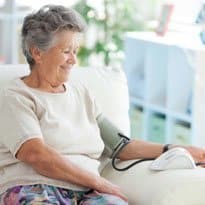Telehealth not cost effective
- 25 March 2013

Telehealth is not cost effective, according to a new report on a massive UK trial of the technology.
The paper, published in the British Medical Journal, assessed the Whole Systems Demonstrator programme, set up by the Department of Health to find evidence to support the use of telehealth and telecare technology.
The new research reveals that adding telehealth to usual care costs £92,000 per quality adjusted life year.
This is several times higher than the National Institute for Health and Clinical Excellence threshold for cost effectiveness, which is £30,000.
“Telehealth does not seem to be a cost effective addition to standard support and treatment,” says the report.
“The QALY gain by patients using telehealth in addition to usual care was similar to that by patients receiving usual care only, and total costs associated with the telehealth intervention were higher.”
The researchers from the London School of Economics analysed the outcomes of 965 patients, 534 who were monitored with telehealth equipment and 431 who received usual care.
They found that the improvement of quality of life for patients who used telehealth was only marginally larger compared to the patients who received standard care.
At the threshold associated with the NICE recommendations, the researchers found that the probability of cost effectiveness was 11%.
In a best case scenario, which takes into account that the technology becomes cheaper over time and that during the WSD trial, not all services were optimised, the report finds that the likelihood of cost-effectiveness would be 61%.
“A community-based, telehealth intervention is unlikely to be cost effective, based on health and social care costs and outcomes after 12 months,” conclude the researchers.
The WSD programme was set up in May 2008.
Reports on the trial have been consistently delayed, but the government rushed to publish ‘headline findings’ from one study in December 2011 to support the launch of the 3millionlives campaign to kick-start the industry.
The headline findings, contained in one paragraph of a press release, claimed that "correct use" of telehealth can deliver reductions in A&E visits, emergency admissions and mortality rates.
However, the WSD reports released so far have yet to prove any significant benefits of telehealth. Despite this, the government continues with its 3millionlives campaign, aiming to have three million telehealth users by 2017.
This latest report follows a previous paper published in February, which found that telehealth did not improve quality of life for patients with long-term conditions.
Chris Wright, programme manager at 3millionlives, admitted to EHI earlier this year that the WSD trial was not sufficient to convince people about telehealth.
“The WSD report lacks in that we haven’t seen great cost benefits yet, but the equipment provided to users then was six to seven years ago and the industry equipment is different now,” he said.




